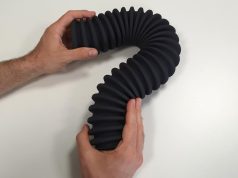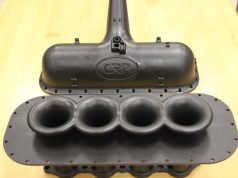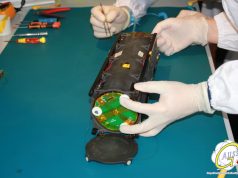Alba Orbital’s PocketQube deployer, 3D-printed by CRP Technology using Windform XT 2.0 as a manufacturing material, has reached a new milestone. It successfully took part in the latest Rocket Lab’s space mission from New Zealand, deploying four PocketQubes into a circular orbit. It was also a recovery mission where, for the first time, Rocket Lab caught the launch vehicle’s first stage as it returned from space under parachutes using a helicopter.
The second Alba Orbital’s launch of 2022, ‘Alba Cluster X’, just occurred from Pad A at Rocket Lab Launch Complex 1 on New Zealand’s Mahia Peninsula.
As part of the Rocket Lab’s “There And Back Again” mission that comprised 34 satellites to a sun-synchronous orbit, the Alba Orbital launch consisted in the deployment of 4 PocketQube satellites out of the 34, using Alba’s advanced 3D printed system “AlbaPod v2”. It was manufactured by CRP Technology using Carbon fibre reinforced Windform XT 2.0 composite material and industrial 3D printing with Laser Powder Bed Fusion.
Specifically, the 3D printing technology used is Selective Laser Sintering, which CRP Technology has helped to improve with the creation and use of Windform materials.
The satellites onboard the Alba Cluster X flight were Alba’s Unicorn-2F and three 1p PocketQubes on behalf of ACME AtronOmatic / MyRadar, who plan to launch a 250-satellite weather data constellation.
Unicorn-2 carries an optical nighttime imaging payload designed to monitor light pollution across the globe. “Night Lights” data (the Night-time satellite imagery) provide crucial insights into human activities, enabling a host of applications such as monitoring light pollution, evaluating armed conflicts and disasters, empowering maritime surveillance, and validating sustainable satellite tech. Unicorn-2F phoned home on the first pass.
All four PocketQubes were deployed to a 500 km circular orbit by Electron’s Kick Stage, a nimble spacecraft that provides in-space propulsion and manoeuvring capability to ensure each satellite is deployed to a precise and unique orbit defined by the customer.
This one was also a recovery mission where, for the first time, Rocket Lab attempted a mid-air capture of Electron’s first stage as it returned from space using parachutes and a helicopter. The successful catch brings Electron one step closer to being the first reusable orbital small sat launcher.
Guest post by CRP Group.
(c) Picture & links: crptechnology.com / windform.com
Subscribe to our Newsletter
3DPresso is a weekly newsletter that links to the most exciting global stories from the 3D printing and additive manufacturing industry.






















